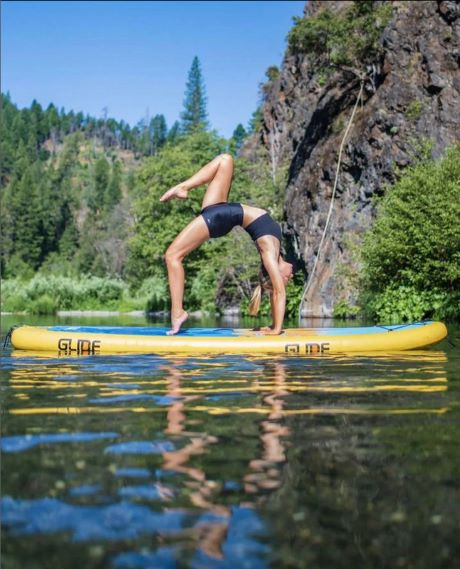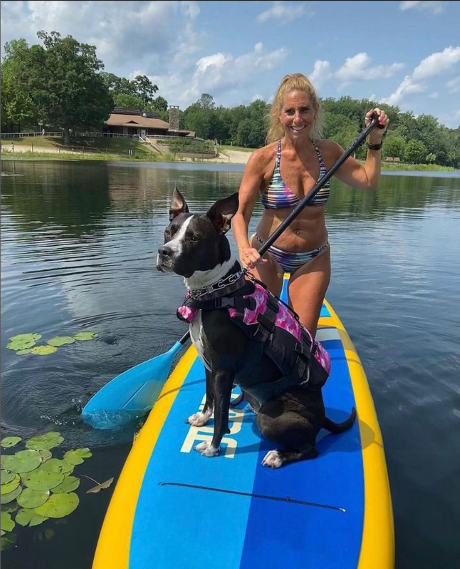
Will Paddle Boarding Get You Ripped? Yes—If You Train Smart
SUP can help you get lean and defined. Mix base miles, intervals, and two short strength sessions, keep technique crisp, and fuel smart for steady fat loss and visible muscle.
Will paddle boarding get you ripped? Yes—paired with smart training and nutrition.
Use crisp technique (clean catch, torso rotation, early exit), mix aerobic base, intervals, tempo, and skills 3–5×/week, and add two short strength sessions.
Fuel performance with carbs around key paddles, keep protein 1.6–2.2 g/kg/day, hydrate/electrolytes for conditions, and run a modest calorie deficit if you’re leaning out.
Sleep well, deload periodically, and track cadence, distance per stroke, and photos/fit. In 8–12 weeks, expect leaner lines, better endurance, and stronger strokes.
Table of contents
 Final Thoughts - Will Paddle Boarding Get You Ripped? FAQs
Final Thoughts - Will Paddle Boarding Get You Ripped? FAQs
Paddle boarding isn’t just “standing and sightseeing.” It’s a full-body engine: legs and hips stabilize, the core transfers force, lats and posterior chain drive the blade, and grip/forearms finish the pull. With the right plan—progressive sessions, a touch of strength work, and dialed nutrition—SUP can absolutely help you lean out and show definition.

What “ripped” really means (and how SUP fits)
“Ripped” = low body fat + visible muscle. SUP helps both sides:
-
Calorie burn: ~300–600+ kcal/hour depending on speed, wind/chop, and body size.
-
Muscle stimulus: Repeated hip/knee/ankle stabilizing + powerful torso rotation and lat drive.
-
Joint-friendly: Low impact means you can train often without pounding.
But you’ll still need consistency, progressive overload, and nutrition that matches your goal.
Technique first: turn strokes into muscle
-
Clean catch: Bury the blade fully at your toes with a vertical shaft. A solid “anchor” lets lats and core do the work (not just arms).
-
Torso rotation: Hips/shoulders rotate together; think “move the board past the blade.”
-
Early exit: Finish around your feet; overpulling wastes energy and strains the low back.
-
Stable stance: Feet hip-width over the handle, soft knees, eyes on the horizon. A planted blade = your balance aid when it gets wobbly.
Programming that drives visible results
Aim for 3–5 SUP days/week mixing aerobic base, intervals, and skill. Add 2 short strength sessions off the water.
1) Base builders (40–60 min, Zone 2):
Steady pace you could chat through. Purpose: fat-use efficiency, technique volume, recovery.
2) Interval engine (24–36 min):
6–8× (2–3 min hard + 2 min easy). Hold stroke quality under fatigue. Purpose: power, conditioning, calorie burn.
3) Tempo/threshold (30–45 min):
3×8–10 min “comfortably hard” with 3 min easy. Purpose: sustainable speed, race fitness.
4) Skills day (20–30 min):
Buoy turns, step-backs, chop handling, cadence ladders. Purpose: efficiency (more speed per watt).
5) Optional long day (60–90+ min):
Once weekly if time allows. Purpose: endurance, extra calorie burn. Keep technique clean.

Off-water strength (2×/week, 25–35 min)
-
Hinge: Romanian deadlift or hip thrust (3×8–12)
-
Pull: Lat pulldown or pull-ups (3×6–10)
-
Anti-rotation: Pallof press or dead bug (3×10–12/side)
-
Single-leg: Split squat or step-up (3×8–12/side)
-
Shoulder health: Face pulls or band external rotation (2×15–20)
Progress loads or reps weekly. Stronger on land = stronger, cleaner strokes.
Board, paddle, and fin choices that help
-
Board: A stable all-around (10’6″–11’6″, ~32″ wide) lets you hold form at speed. Narrower/touring shapes amplify fitness once your balance is solid.
-
Paddle: Mid-size blade (to keep cadence high) with a light shaft reduces joint stress and fatigue.
-
Fin: Standard dolphin fin slid back for tracking on fitness days; forward for agility during skills.
Sample 2-week “get-lean, keep-muscle” plan
Week 1
Mon – Intervals (30 min)
Tue – Strength A (hinge/pull/core)
Wed – Base (45–60 min)
Fri – Skills + strides (25–30 min)
Sat – Long aerobic (60–75 min)
Sun – Mobility walk or light spin (20–30 min)
Week 2
Mon – Tempo (35–40 min)
Tue – Strength B (single-leg/anti-rotation/shoulders)
Wed – Base (45–60 min)
Fri – Intervals (24–30 min)
Sun – Long aerobic (60–90 min)
Repeat; add 5–10% volume or a smidge of intensity every 1–2 cycles.
Nutrition: where fat loss actually happens
-
Protein: 1.6–2.2 g/kg/day to protect/build muscle. Spread over 3–4 meals.
-
Calorie balance: For leaning out, aim for a modest deficit (not aggressive). Keep performance days fueled (carbs before/during), trim calories from lower-priority meals.
-
Carbs for work: 25–40 g 30–60 min pre-paddle; 20–60 g/hour on sessions ≥75–90 min; replace with a normal meal post.
-
Hydration/electrolytes: 400–800 ml/hour on warm days; 300–600 mg sodium/hour in heat/heavy sweats.
-
Simple rule: Fuel the sessions that matter; eat normally on easy days; keep protein high daily.
Recovery so you can train again tomorrow
-
Sleep: 7–9 hours—biggest legal performance enhancer.
-
Mobility: 5–8 minutes post-paddle (hips, lats, thoracic).
-
Deload: Every 3–5 weeks, reduce volume ~30% for 5–7 days.
Measuring progress that matters
-
Stroke metrics: Cadence (SPM) + distance per stroke (virtual or GPS).
-
Heart rate at a given pace: Falling HR = better economy.
-
Photos/fit: Visuals and how clothes fit will show “ripped” faster than scale alone.
-
Strength log: Add reps/weight slowly; joint comfort is the guardrail.
Final Thoughts - Will Paddle Boarding Get You Ripped?
Paddle boarding can absolutely help you get lean and defined—but it won’t happen by accident. Keep technique crisp, stack consistent sessions, sprinkle in strength work, and eat for your goal (high protein, smart carbs around training, modest deficit if you’re cutting). Give the plan 8–12 solid weeks. The mirror—and your speed—will notice.
FAQs
Is SUP enough to get ripped without lifting?
It can lean you out. For visible definition, add 2 short strength sessions/week to keep and build muscle.
Best paddle length/blade for fitness?
Mid-size blade with a light shaft; length roughly 6–8 in (15–20 cm) above height, then tweak for board thickness and cadence.
How many days per week?
3–5 paddle sessions with 1–2 strength days works for most. Protect one full rest day.
Intervals or long paddles for fat loss?
Both. Intervals raise post-exercise burn and fitness; long steady paddles add volume without frying you.
Will I get big arms from SUP?
Expect athletic definition, not bodybuilder size. SUP + strength yields lean, functional muscle.
What if my lower back gets tired?
Likely overpulling or arm-paddling. Exit at your feet, rotate from the torso, hinge at hips, and strengthen glutes/core.
Can I cut carbs to shred faster?
Don’t starve your sessions. Keep carbs around key paddles; trim elsewhere. Protein stays high.
iSUP or hard board for fitness?
Both work. iSUPs are convenient and forgiving; hard boards feel a bit more reactive at speed.
How long to see results?
Most notice cardio and posture changes in 2–3 weeks, visible definition in 6–12+ weeks with consistent training and diet.
What about SUP yoga?
Great accessory day: balance, mobility, core—all helpful for posture and recovery.





